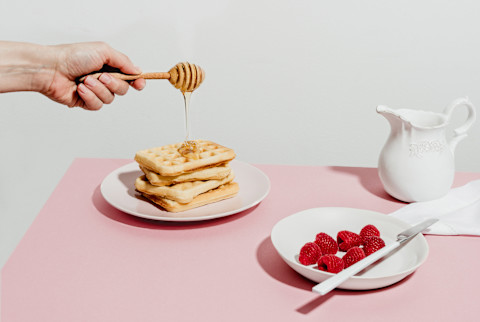Why Stingless Bee Honey May Be Better For Blood Sugar Balance

Honey has a long history as a functional food with therapeutic benefits, stretching thousands of years1. And ongoing research continues to find new beneficial reasons to use this sweet superfood.
Now, a study from a team at the University of Queensland in Australia has found that stingless bee honey, in particular, may be better for blood sugar balance than other varieties produced by honey bees.
What is stingless bee honey?
Stingless bee honey comes from varieties of bees2 that are not able to sting in self-defense—though some types have painful bites. There are over 500 species, all native to tropical and subtropical regions.
Their honey differs from the honey of traditional honey bees in terms of color, taste, and viscosity and has a history of therapeutic uses in native cultures. Previously, stingless bee honey has been linked to other benefits3 like antimicrobial activity, antioxidant activity, and some anti-inflammatory effects, among other things.
While many of the benefits overlap with the better-known Manuka honey, they're not the same. Manuka honey is named for the flowers of the Manuka bush, which the bees that produce the honey pollinate. According to Fletcher, "Stingless bee honey sells now for around AUD $200 per kilogram, which is up there with the price of Manuka."
She warns that due to this high price point, fraudulent sales of other honeys as stingless bee honey are possible. However, the knowledge of the honey's structure means it can be tested to set a quality standard for the product.
Why stingless bee honey may be better for blood sugar
The University of Queensland study, which tested native stingless bee honey from Australia, Malaysia, and Brazil and found that the majority of sugar compounds in the honey is trehalulose, not maltose as they thought. Trehalulose, while not found in many other foods, has a lower glycemic index (GI) than other sugars.
"Traditionally it has been thought that stingless bee honey was good for diabetes, and now we know why," explains Mary Fletcher, Ph.D., an associate professor of chemistry and molecular biosciences and the lead author of the paper. "Having a lower GI means it takes longer for the sugar to be absorbed into the bloodstream, so there is not a spike in glucose that you get from other sugars."
According to Fletcher, Indigenous cultures have long known that stingless bee honey has special health benefits, and this study points to a potential reason for those health benefits. In addition to its lesser GI, they found that stingless honey is also acariogenic, which means it won't cause tooth decay.
Since natural forms of trehalulose are rare, this breakthrough offers an exciting source that won't require synthetics. "People have patented ways of making trehalulose synthetically with enzymes and bacteria, but our research shows stingless bee honey can be used as a whole food on its own or in other food to get the same health benefits."
Bottom line
While many types of honey offer significant health benefits, it's exciting to see a natural source with low GI sugar which can help maintain healthy blood sugar balance.
